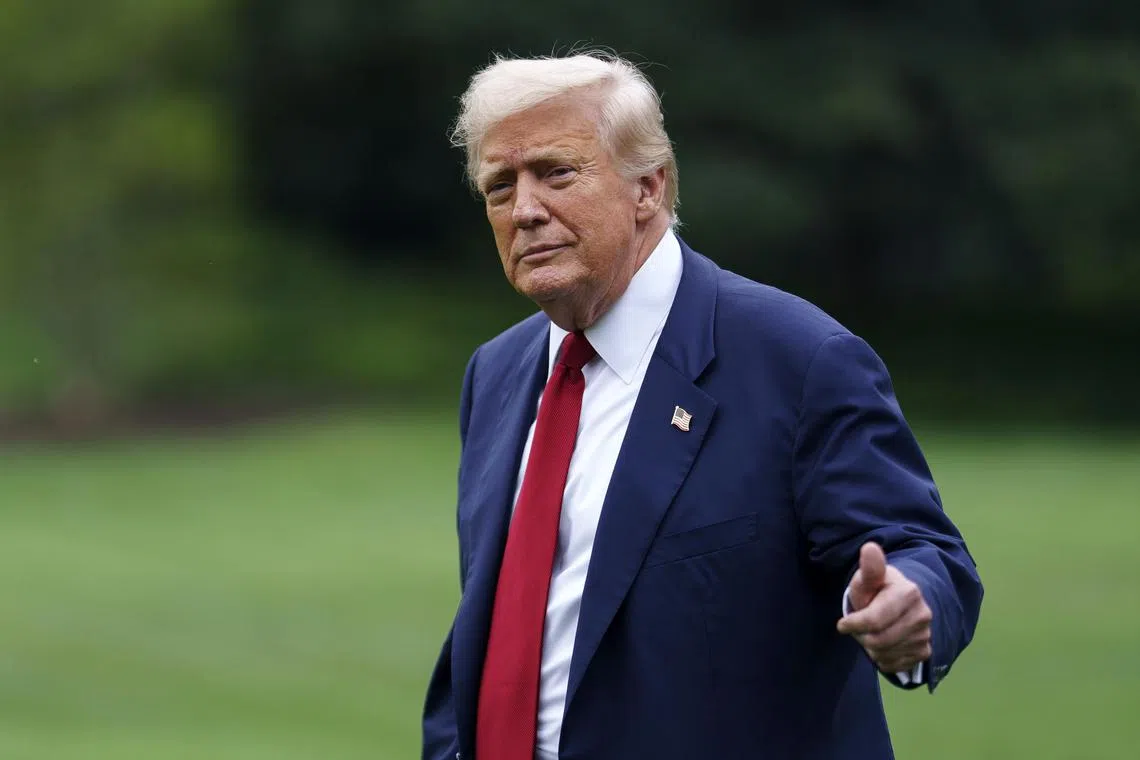Trump orders firing of US economic official as cracks emerge in jobs market
Sign up now: Get ST's newsletters delivered to your inbox

US President Donald Trump on Aug 1 lashed out at a Labour Department statistics official, saying without evidence that she had "rigged" the July employment data.
PHOTO: EPA
Follow topic:
- Donald Trump claimed the US jobs data was rigged to hurt Republicans after the Labour Department reported lower-than-expected job growth.
- July saw 73,000 jobs added, with unemployment rising to 4.2%, and significant downward revisions to previous months, signalling labour market challenges.
- Economists warn tariffs create uncertainty, potentially leading to layoffs, while some Federal Reserve officials advocate for interest rate cuts to avoid a weaker labour market.
AI generated
WASHINGTON – President Donald Trump said on Aug 1 he has ordered the firing of a key economic official, accusing her of manipulating employment data for political reasons after a new report showed cracks in the US jobs market.
US jobs growth missed expectations
Mr Trump lashed out at the department’s commissioner of labour statistics – Dr Erika McEntarfer – after the report, writing on social media that the jobs numbers “were rigged in order to make the Republicans, and me, look bad”.
In a separate post on his Truth Social platform, he charged that Dr McEntarfer had “faked” jobs data to boost Democrats’ chances of victory in the recent presidential election.
“McEntarfer said there were only 73,000 jobs added (a shock!) but, more importantly, that a major mistake was made by them, 258,000 jobs downward, in the prior two months,” Mr Trump said, referring to the latest data for July.
“Similar things happened in the first part of the year, always to the negative,” he added.
He insisted that the world’s biggest economy was “booming” under his leadership.
The US added 73,000 jobs in July, while the unemployment rate rose to 4.2 per cent from 4.1 per cent, said the Labour Department earlier on Aug 1.
Hiring numbers for May were revised down from 144,000 to 19,000. The figure for June was shifted from 147,000 to 14,000.
This was notably lower than job creation levels in recent years. During the Covid-19 pandemic, the economy lost jobs.
The employment data points to challenges in the key labour market as companies take a cautious approach in hiring and investment while grappling with Mr Trump’s sweeping – and rapidly changing – tariffs
The numbers also pile pressure on the US central bank as it mulls over the best time to cut interest rates.
With tariff levels climbing since the start of the year, both on imports from various countries and on sector-specific products such as steel, aluminium and cars, many companies have faced higher business costs.
Some are now passing them along to consumers.
‘Game changer’
“This is a game-changer jobs report. The labour market is deteriorating quickly,” said Ms Heather Long, chief economist at the Navy Federal Credit Union.
She added in a note that of the growth in July, “75 per cent of those jobs were in one sector: healthcare”.
“The economy needs certainty soon on tariffs,” Ms Long said. “The longer this tariff whiplash lasts, the more likely this weak hiring environment turns into layoffs.”
But it remains unclear when the dust will settle, with Mr Trump ordering the reimposition of steeper tariffs on scores of economies late on July 31, which are set to take effect in a week.
The President also raised tariffs on Canadian imports, although broad exemptions remain.
Mortgage Bankers Association economist Joel Kan said that for now, “goods-producing industries saw contraction for the third straight month”.
“Service industries involved in trade also saw declines in job growth, potentially a result of the uncertain tariff environment, as businesses either put their activity on pause or pulled back altogether,” Mr Kan added in a note.
‘Overly cautious’
A sharp weakening in the labour market could push the US Federal Reserve towards slashing interest rates sooner to shore up the economy.
On Aug 1, the two Fed officials who voted this week against the central bank’s decision to keep rates unchanged
Both Fed vice-chair for supervision Michelle Bowman and governor Christopher Waller argued that the inflationary effects of tariffs were temporary. They added in separate statements that the central bank should focus on fortifying the economy to avert further weakening in the labour market.
Putting off an interest rate cut “could result in a deterioration in the labour market and a further slowing in economic growth”, Ms Bowman added.
Mr Waller said: “I believe that the wait-and-see approach is overly cautious.” AFP

